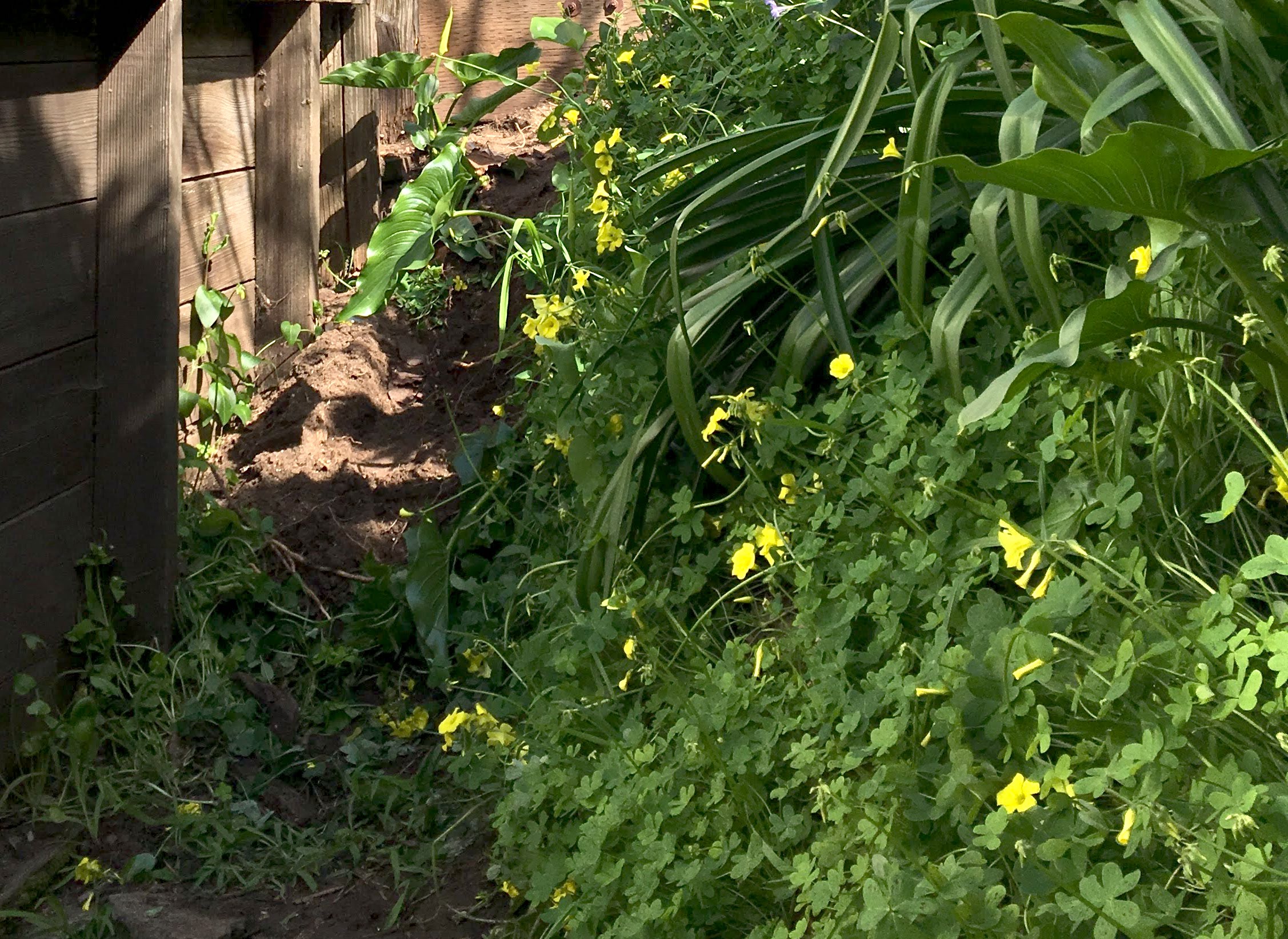A New Gardening Year
/A New Gardening Year
In the final days of January, the buds were swelling on the purple plum trees that grace San Francisco streets. The tiny new moon heralded the Chinese New Year, marking the beginning of another growing season. By the time this newsletter reaches its readers, the plum trees will be in full bloom, as clouds of pink blossoms assert Mother Nature’s confidence, despite a dry winter in the watershed and in the economy.
A plum in bloom on the sidewalk in the Inner Sunset.
Winter Rain Brings Weed Problems
For gardeners, the plum blossoms also signal the growing season for weeds. The bright yellow flowers of cape oxalis (Oxalis pes-caprae) are as much a mark of spring as the plum blossoms, and much less welcome. This weedy oxalis, which has naturalized in San Francisco gardens, is originally from South Africa. Perfectly adapted to our mild climate and dry summers, oxalis is dormant throughout the dry season, and grows again as soon as the soil is moist in the fall. By spring, many gardens are so awash with oxalis that nothing else can be seen but its clover-like leaves and its yellow flowers.
Oxalis 101
When oxalis has grown successfully the season before, it stores its extra energy in little brown bulbs deep in the soil, but not strongly attached to its roots. For a gardener digging up oxalis, it is almost impossible to get all the bulbs out with the plant. Unfortunately, this weed will be glad to regrow from any bulb left behind. Last winter at GFE, we started the season trying to dig our oxalis with the bulbs, but unfortunately it was growing faster than we could dig. A little research (in Pam Pierce’s columns in the Chronicle) suggested a different strategy, which we are now following successfully.
Wherever we see oxalis growing, we are trying to pull off the top of the weed, being careful to pull it below the stem joint where the leaves begin to separate from the main stem. This deals the plant a blow, and it takes a bit of time and energy for the bulbs to generate another growing tip. We try always to mulch heavily on top of the newly weeded soil, which also makes it harder for the oxalis bulbs to push a new growing tip up into the sunlight. In some areas of the garden, where we have done this several times in the course of two years, the oxalis bulbs have exhausted themselves and are no longer regrowing.
Oxalis growing at GFE.
Sheet Mulching
Another strategy we use against oxalis is sheet mulching. After weeding out an area, we spread cardboard or layers of newspaper over the soil with the edges overlapping so that no sunlight can penetrate to the soil surface. Then we cover the layered area with mulch or manure, and water. The oxalis bulbs will exhaust themselves trying to grow out to the sunlight while never reaching it.
SHeet mulching for weed suppression.
What is a weed?
This is a question new gardeners always ask in the Basic Organic Gardening class. A plant may be called weedy if it competes aggressively and successfully with other plants, and if it multiplies freely. But in the last analysis, a weed is simply a plant growing where the gardener doesn’t want it to grow. A good example in our borders are the calla lilies (Zantadeschia aethiopica). Vigorous, lovely, and a good cut flower, calla lilies are a useful and appropriate plant for San Francisco gardens. However, they multiply freely in a watered garden, and pretty soon they are everywhere. When they cross the invisible line and become a weed is a question only the gardener can answer. Last year, we let them stand in the border, while we tried to stabilize the sandy slope and begin new plantings. Now that the border is more stable and full of new plants, we are selectively weeding them out.
Invasive exotics
One of the prices nature lovers pay for globalization is that plants from around the world are brought here, either intentionally as nursery stock, or unintentionally as weeds in other plants or products. Some of these never take off in our climate, but others love it here in California, and actually compete very successfully with our native plants.
The eucalyptus trees which many people think of as a signature California plant are all from Australia originally, planted in the 1900s with hopes that they could become useful for timber. That never worked out, but the eucalyptus naturalized and took over some areas from the native plants that lived there before. When exotic plants take over our wild natural areas, this is a problem because most exotics don’t support our native wildlife. If eucalyptus, broom, ivy, fennel, pampas grass and bull thistle were allowed to grow freely on Mt. Tamalpais and other wild lands, eventually our native insects, like the Mission Blue butterfly, would not have an opportunity to reproduce. Their host plants would no longer have any habitat. Luckily, dedicated volunteers and hard-working GGNRA staff do their best to limit the spread of wildland weeds. Can you imagine trying to weed Mt. Tamalpais?
One thing home gardeners can do to help with these efforts is to check the status of plants before buying them at the nursery. Invasive exotics are listed at the California Department of Food and Agriculture website. To find out more about efforts to limit wildland weeds, contact the California Native Plant Society, or read more on this topic in Pam Peirce’s book Wildly Successful Plants.





